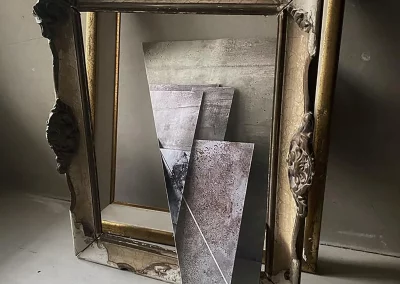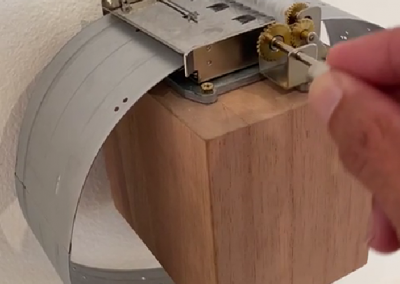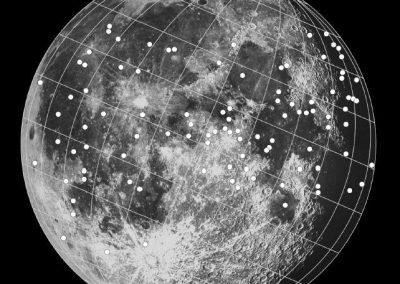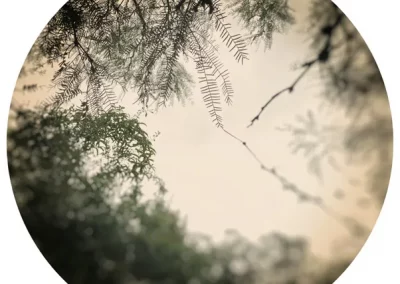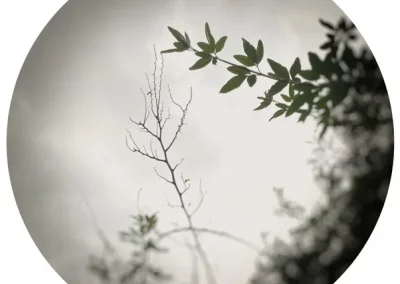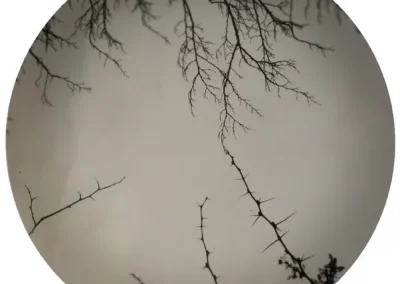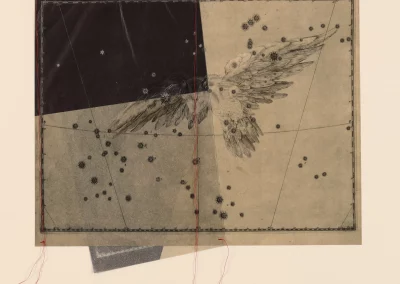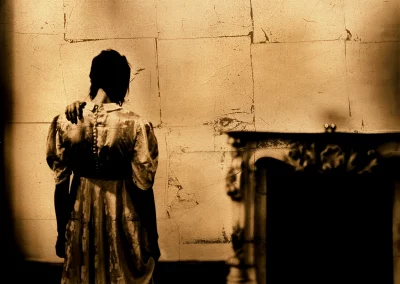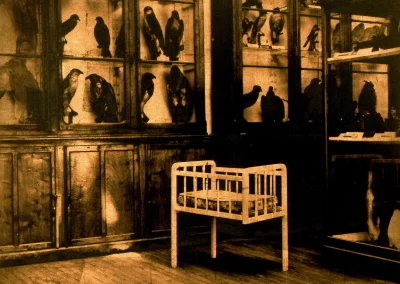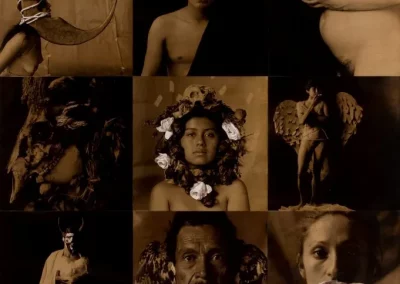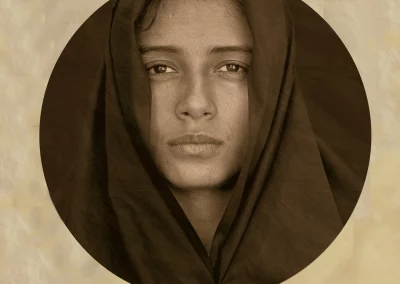
…una isla hecha de agua
25.05.2024 – 27.07.2024

Todo, absolutamente todo lo que hago, lo hago con ese fin. Ser una isla de agua en un mar violento y calmo. Convertirme en algo que se disuelve, formar parte de la mente del mundo. Necesito esa aventura, la inmensa y profunda experiencia de naufragar y salir ileso.
Luis González Palma
Con estas palabras el autor guatemalteco nos sitúa frente a una colección de imágenes que resumen su reflexión sobre la mirada, la historia, la introspección y la representación de lo no visible. Una fotografía meditativa que juega con los sentidos y donde la palabra cobra protagonismo, transitando indistintamente entre la figuración y la abstracción. Luis González Palma nace en Guatemala en 1957. Después de finalizar la carrera de Arquitectura, su interés por el arte, la pintura y la fotografía le llevaron a profundizar en estos campos. Su larga trayectoria como creador le ha llevado a convertirse en uno de los artistas más relevantes del ámbito latinoamericano. Para este autor, la imagen poética es una experiencia ritual, una pausa en el tiempo, un consuelo. El misterio y el asombro sostienen la aventura visual en la que Luis González Palma navega diluyendo su mirada en un océano de silencio.
MĀYĀ
UNA LUZ QUE TIEMBLA
LOS HUESOS DEL AGUA II
…UNA ISLA HECHA DE AGUA
UN PÁJARO DE PIEDRA
Hacer coincidir dos historias, dos tiempos, dos situaciones distantes entre sí. Crear una especie de ceremonia efímera con la mirada: la de unir simbólicamente dos deseos que vagan por el mundo por caminos distintos. Percibir en un breve instante los vestigios de un silencioso juego, el de alguien que se asombra ante el encuentro de una mirada adulta con su mirada infantil, la inquieta, la que lleva la inocencia del mundo en sus hombros, la que hace que la naturaleza pueda latir en nuestra mente.
Una mirada desde la que se puedan imaginar puentes, puntos de unión, contactos efímeros. Encuentros en donde se cuenten secretos en silencio, como si en ellos se volvieran a dar vínculos profundos y antiguos. Encuentros sin presión, carentes de espasmos, en donde solo existe un leve roce casi imperceptible.
Mi búsqueda no es solo la del encuentro entre dos ramas distantes entre sí. Mi verdadera búsqueda es la del encuentro entre mi mirada y el milagro de la vida, entre mi obra y la mirada del espectador; dos naturalezas que se unen a partir de una experiencia visual y emocional cargada de sensibilidad. Cómo la de un ciego que descifra un texto a partir del roce de sus dedos. Mi deseo es el de establecer un diálogo poético a partir de lo inesperado, el de generar una imagen que estimule nuestra imaginación.
Al final, este proyecto es la metáfora del encuentro con uno mismo y con el otro, con lo otro, con lo distinto, con lo ajeno y con lo propio. Por cierto, ¿en que sueña un pájaro de piedra?
CANTO DE QUETZTAL
EL OLOR DEL PINO ES LO QUE ESCUCHAS
ST #01. Tríptico. El olor del pino es lo que escuchas, 2023.
Impresión en papel acuarela + fotografía / Print on watercolour paper + photo
ST #02. Tríptico. El olor del pino es lo que escuchas, 2023.
Impresión en papel acuarela + fotografía / Print on watercolour paper + photo
ST #03. Tríptico. El olor del pino es lo que escuchas, 2023.
Impresión en papel acuarela + fotografía / Print on watercolour paper + photo
IMAGOMETRÍA CELESTIAL
Celestial #04. Imagometria celestial, 2021.
Impresion digital sobre papel cebolla más hilos rojos. Collage / Digital printing on onion paper plus red threads. Collage
Celestial #05. Imagometría celestial, 2021.
Impresion digital sobre papel cebolla más hilos rojos. Collage / Digital printing on onion paper plus red threads. Collage
MÖBIUS
S/T #2. Möbius, 2014.
Impresión sobre papel de algodón y láminas de oro. / Inkjet print on cotton paper with gold leaf.
S/T #4. Möbius, 2014
Impresión en Canvas lámina de oro y betún de Judea / Print on canvas with gold leaf and bitumen
S/T #3. Möbius, 2014.
Impresión sobre papel de algodón y láminas de oro. / Inkjet print on cotton paper with gold leaf.
El proyecto que planteo es el de generar una “conciliación” simbólica entre dos formas distintas de representación de la realidad, abstracción / figuración, activando tensiones y creando relaciones entre ellas desde ópticas diametralmente opuestas. El interés que tengo es crear obras ambiguas e indeterminadas, abiertas a nuevos argumentos y posibilidades que permitan un diálogo inédito entre la pintura abstracta con claras referencias al concretismo y neoconcretismo latinoamericano y fotografías de mi autoría, usualmente retratos cargados de emoción, intensidad subjetiva y fuerte carácter lírico.
El fin de esta experiencia creativa es la de crear nuevos sentidos y asociaciones visuales que prefiguren nuevas sensibilidades que aporten una relectura de la historia visual de las ideas desde este lado del mundo, desde su historia y sus contradicciones.
KOAN
JERARQUÍAS DE INTIMIDAD
El amor coagulado. Jerarquías de Intimidad, 2005.
Película ortocromática láminas de oro / Orthocromatic film gold sheets
Como un secreto se seduce a si mismo. Jerarquías de Intimidad, 2005.
Película ortocromática sobre láminas de oro / Orthochromatic film on gold leaves
Mientras esperaba pensaba en el sueño. Jerarquías de Intimidad, 2004.
Película ortocromática láminas de oro / Orthocromatic film gold sheets
Murmuran los recuerdos. Jerarquías de Intimidad 2004.
Película ortocromática láminas de oro / Orthocromatic film gold sheets
Estrategia que nos une. Jerarquías de Intimidad, 2005.
Película ortocromática láminas de oro / Orthocromatic film gold sheets
Para no hablar de ella. Jerarquías de Intimidad, 2004.
Película ortocromática sobre láminas de oro / Orthochromatic film and gold leaf
El canto después del encuentro. Jerarquías de Intimidad, 2004.
Película ortocromática láminas de oro / Orthochromatic film gold foils
OTRAS SERiES
La Lotería I (la luna, el rey, la muerte, la máscara, la rosa, la dama, el diablo, el pájaro, la sirena), 1988.
Técnica mixta. Fotografía sobre papel acuarela betún de judea / Photography on watercolour paper judea bitumen and mixed media
1580 – 1585. El Greco, la luz de la mente, 2005
Película ortocromática sobre láminas de oro / Orthochromatic film on gold leaves
…AN ISLAND MADE OF WATER
Everything, absolutely everything I do, I do it for that purpose. To be an island of water in a violent and calm sea. To become something that dissolves, to become part of the mind of the world. I need that adventure, the immense and profound experience of being shipwrecked and coming out unscathed.
Luis González Palma
With these words the Guatemalan author places us in front of a collection of images that summarise his reflection on the gaze, history, introspection and the representation of the non-visible. A meditative photography that plays with the senses and where the word takes centre stage, moving indistinctly between figuration and abstraction. Luis González Palma was born in Guatemala in 1957. After finishing his degree in architecture, his interest in art, painting and photography led him to delve deeper into these fields. His long career as a creator has led him to become one of the most relevant artists in Latin America. For this author, the poetic image is a ritual experience, a pause in time, a consolation. Mystery and astonishment sustain the visual adventure in which Luis González Palma navigates, diluting his gaze in an ocean of silence.
MĀYĀ
The project revolves around the idea of conceiving reality as illusion. We do not see what we see, we see what we need to see. All reality is an illusion and all representation will therefore be a double illusion.
A LIGHT THAT TREMBLES
The Moon, this celestial body, has not only illuminated the minds of scientists and astronomers throughout history, it has also been the source from which much poetry has sprung and has formed part of the symbolic imaginary since the beginning of humanity.
But the Moon is not only our celestial companion, it is, we could say, a living body, constantly changing, interacting with the Earth in a reciprocal way.
One example of this is its seismic activity. Ever since the US space programme touched lunar soil, several seismographs have been set up to record lunar seismic movements known as ‘lunamotos’. These movements can be shallow, medium-deep or deep. This means that our 4.51 billion-year-old satellite is still transforming. It is geologically active, i.e. a celestial body in constant evolution and change.
The idea of this project is to replace the place of the epicentres of the recorded lunamotos with a hidden sonority; transforming an act of energy release into one of symbolic and poetic character. To this end, the geographical references of the epicentres have been transferred to a card which, when perforated, activates the device of a music box.
THE WATER BONES
The idea is to create a work in communion with the wind and nature, where the subjectivity of the creator does not impose itself, where what is registered is the contingency of our own life. The evocation of a haiku, ‘bones of air, the hummingbird rests, the branch trembles’, serves as inspiration for this series.
AN ISLAND MADE OF WATER
There is always something beyond in every representation. Something that escapes us forever. Within this ‘beyond’ is the surface that every photograph contains, a space that, however minimal it may be, always hides something, harbours a mystery invisible to the naked eye, contains symbolic matter that records the traces of time, gestures and the tactile memory of our bodies. It is the container of a universe of eloquent but extremely subtle images.
In general it could be said that every image is a device permanently open to the imagination from which poetic/symbolic relations are established with the outside world, it is living matter, mutable, always in the process of change; an intermediary space, not only with our limited gaze, but also with our body, our gestures, our trace and our world. An open space to condense chance, always unpredictable.
On the other hand, every family photo (which is what counts in this project), concentrates our personal history and our emotional intimacy, contains an always enigmatic relationship. I say this because it is the receptacle of a ritual where the caress, the pressure of the fingers or the imprint of a kiss are recorded every time we touch them, caress them or brush them with our lips. With this project I try to make visible the invisible aspects that every photographic surface contains: traces that pulsate in each image, gestural aspects that we are unable to access when we see a photograph with the naked eye. The idea is to make visible through optical technology the tactile, gestural and corporal history concentrated in a photograph.
A STONE BIRD
To make two stories, two times, two distant situations coincide. To create a kind of ephemeral ceremony with the gaze: that of symbolically uniting two desires that wander through the world on different paths. To perceive in a brief moment the vestiges of a silent game, that of someone who is astonished by the encounter of an adult gaze with his childish gaze, the restless one, the one that carries the innocence of the world on its shoulders, the one that makes nature beat in our minds.
A gaze from which bridges, points of union, ephemeral contacts can be imagined. Encounters where secrets are told in silence, as if deep and ancient bonds were re-established. Encounters without pressure, devoid of spasms, where there is only a slight, almost imperceptible touch.
My quest is not only that of the encounter between two distant branches. My true quest is that of the encounter between my gaze and the miracle of life, between my work and the gaze of the spectator; two natures that come together through a visual and emotional experience charged with sensitivity. Like that of a blind man who deciphers a text by the touch of his fingers. My desire is to establish a poetic dialogue based on the unexpected, to generate an image that stimulates our imagination.
In the end, this project is a metaphor for the encounter with oneself and with the other, with the other, with what is different, with what is foreign and with what is one’s own. By the way, what does a stone bird dream about?
QUETZAL SONG
The dream world enriches our imagination. It has the capacity to generate moments of reverie, of profound contact with aspects of life that remain invisible. The song of a bird, something profoundly ephemeral, is part of it; it leaves a poetic imprint on those who listen to it, it is food for our spirit, a consolation, as it is a symbol of life, freedom and joy. The quetzal, a bird that lives in my country, Guatemala, has been considered since the ancient Mexica and Maya as a god of the air and a symbol of goodness and light. It is a bird venerated for its relationship with the Mayan cosmogony because of its close relationship with the spring ritual; its name has a meaning linked to the sacred and the precious. I think that giving body to a bird’s song is really a poetic gesture. That is what I am trying to do with this work. To make the sound of a quetzal’s song into a sculpture that represents those vibrations that stimulate us and connect us with a mythological world, with the nature of reverie, with life as a song.
THE SMELL OF PINE IS WHAT YOU HEAR
I think that in our memory every smell has a sound that accompanies it. In mine, the smell of pine that flooded the garden of my aunt’s house while I was playing reminds me of the voice of my maternal grandmother whom I always visited on the roof: the smell of pine and her voice were the same for me, an emotion that I now understand as subtle caresses in a desperate childhood.
******
This project was born out of the desire to venture into the microscopic world of dedications or annotations that are usually found on the back of family photos. Traces that live in a hidden and silent pulsating space. By magnifying these minimal traces a hundred times through an electron microscope, we can find unexpected forms, new perspectives. We live in a world inhabited by other worlds. The infinite universe has its mirror in the microscopic, something evident to privileged beings who have said so throughout history in different cultures.
******
The smell of pine is what you hear is an extension of another project -Una isla hecha de agua. They both pursue the same thing, they both strive to show the visual aspects of a world that is forbidden to us without the contribution of technology. It also has to do with something that moves me: the awareness that in my family photos I carry the smell of my past, a smell that evokes murmurs and sounds of a distant time but that continues to echo in my memory, in my body. Much of what moves and moves me is in a few grams of matter. Entire universes. In the end, it seems that I carry the stars not only in my consciousness, they also inhabit what I hold and caress in the palm of my hand, with the touch of my fingers and the silence of my gaze.
CELESTIAL IMAGOMETRY
The representation of constellations are always abstractions. They have been so in all cultures throughout history as they have served to give a symbolic meaning to the firmament and its relationship with infinity and the human imagination. This series is based on the ‘Atlas Uranometria’, a work published by the astronomer and lawyer Johan Bayer in the 17th century. One of the copies of this book is in the Astronomical Observatory of Córdoba, Argentina; a jewel of the intersection between art and science as it was the first Atlas where the drawings cover the entire celestial sphere. It is from its pages, original copper engravings by Alexander Mair, that I have drawn for the creation of this project. In 1957 (coincidentally the year of my birth) Jorge Luis Borges, together with Margarita Guerrero, wrote the ‘Manual of Fantastic Zoology’, a book that later had the title: ‘The book on imaginary beings’. Texts where they talk about fantastic beings that arise from myths, dreams, nightmares or human imagination in different cultures.
‘Celestial Imagometry’ is born from these sources. The constellations present in this series are beings imagined by myself. Non-existent, fictions of my own mind. Constellations that only revolve around my imagination, abstractions that could inhabit an infinite and personal sky. Each constellation is the fruit of the mixture of others, the representation of confusion and impurity. No one has seen these images in the skies of any culture, but they undoubtedly inhabit my dreams, where my desire to make sense of an incomprehensible and indifferent universe nests.
MÖBIUS
The project I propose is to generate a symbolic ‘conciliation’ between two different forms of representation of reality, abstraction / figuration, activating tensions and creating relations between them from diametrically opposed points of view. My interest is to create ambiguous and indeterminate works, open to new arguments and possibilities that allow an unprecedented dialogue between abstract painting with clear references to Latin American concretism and neo-concretism and photographs of my own, usually portraits charged with emotion, subjective intensity and strong lyrical character.
The aim of this creative experience is to create new senses and visual associations that prefigure new sensibilities that provide a re-reading of the visual history of ideas from this side of the world, from its history and its contradictions.
KOAN
The koan, in Zen philosophy, is a question without a logical solution, aimed at breaking the normal patterns of thought and entering into a sudden awareness of enlightenment. It allows me to make a visual reflection based on astronomical photographs taken at the Observatory of Córdoba, Argentina, the first astronomical observatory in the southern cone and, therefore, the place where the first images of space were recorded from this part of the world.
HIERARCHIES OF INTIMACY
I have attempted to depict scenes charged with significant psychological experiences, ‘invisibilising’ them, (through the name of the photo) with dialogues that are part of a silent script in seemingly disconnected films. A rehearsal of images charged with mystery and tension that present an arrested and unsettling drama, in which each photo acts as an instant of elongated dream, and in which timeless figures are like wounds of memory. In each of the images the visible body and the object are vehicles for entering a secret but brilliant world, openly presented, yet encapsulated, denied to the caress, but offered to the gaze, as is the case with religious iconography. The mise-en-scène presents the time of the unconscious with its free association, its longings and its fears; human acts have been woven into an unreal and outdated world; death is once again staged within the sacred glow of the gold leaf.
EXPOSICIÓN ESPACIO DOS
JAIME COMPAIRÉ
SEE YOU LATER
25.05.2024 – 27.07.2024
Pintor, escritor, compositor, publicista, hombre de radio y televisión, Jaime Compairé (Huesca, España) ganó muchos premios cuando era joven y ahora que hace muchos años que no lo es tanto, incómodo con la especialización que impone el mercado, ha regresado al siglo en el que mezclar pigmentos, inventar máquinas de guerra o diseccionar lagartijas para comprobar que tienen alma eran la misma cosa.
Paradójicamente, convencido de que lo más divertido está por llegar, sigue empeñado en encontrar atajos entre las sales de plata (una pasión heredada de su abuelo, el extraordinario fotógrafo Ricardo Compairé) las herramientas digitales y las formas más expresionistas de la pintura.

